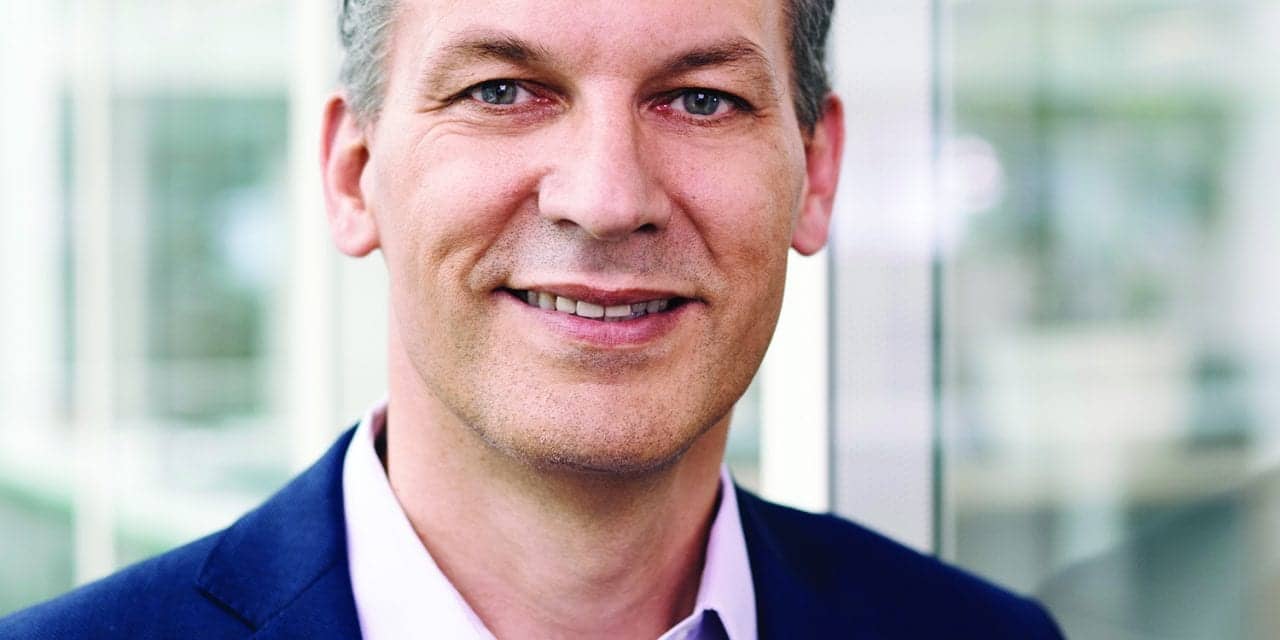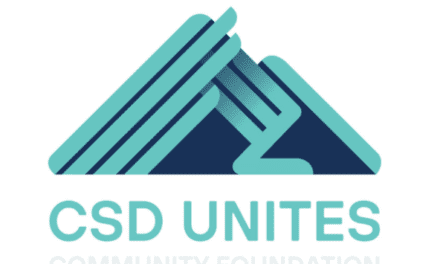Industry Insider | March 2019 Hearing Review
Sonova is the world’s largest hearing aid company, and is the parent group for Phonak, Unitron, Hansaton, Advanced Bionics, and more. In late 2017, Arnd Kaldowski took the helm of Sonova and has now been CEO for more than a year and a half. HR thought it would interesting to get his perspectives on the hearing industry, the changing market, and what’s ahead in 2019, as well as Phonak’s recent launch of the Marvel hearing aid.
Strom: For those still unfamiliar with you, I wanted to give readers an idea of your previous experience in healthcare. You’d worked in New York and abroad as a group executive at Beckman Diagnostics, a company that probably isn’t well known to most hearing care professionals (HCPs) but is a worldwide giant in the development and manufacturing of diagnostic equipment and biomedical laboratory instruments. Can you tell us about what excites you in the healthcare field or what achievements you were proudest of during that part of your career?
Kaldowski: I’ve been in healthcare, in different shapes and forms, for almost 20 years now. For example, I was in diagnostics for about 10 years, and we worked on everything from blood testing—in fact, there was about a 20% chance in the US that, if you had a blood test, it was run on our equipment and our reagents—to very sophisticated molecular tests for cancer diagnosis and treatment…I was even in the fortunate position to take part in a $4 billion capitalization, bringing molecular testing to the point of care in physicians’ offices. No matter if it was flu testing or cancer testing, big or small, it was always exciting to see how you can provide better tools and easier-to-use methods—all of which translate into more meaningful diagnostic outcomes and, ultimately, the ability to pick the right treatment path.
So healthcare excites me. When you ask me “What makes you proud?”, I would say what really makes me proud, emotionally, is when I stand somewhere and recognize how far the world has come in helping patients—really large numbers of people. Everyone knows a person or loved one who has benefitted from advancements in healthcare. What’s really uplifting is we now have technologies that are making a huge difference in people’s lives—in many cases, saving lives.
From the “manufacturers’ side,” you end up gaining a huge amount of respect for healthcare professionals like doctors, nurses, technicians, or any medical practioner, really. They play a crucial role. And we, as manufacturers, have an important role to play, too. It’s that combination which ultimately delivers the innovations in care. So, being able to partake in those partnerships has been uplifting and provides a real purpose beyond what some might consider the “business and management aspects.”
Strom: And, I would suspect the same applies for Sonova and hearing healthcare—and that you’ve brought some unique strengths to the Sonova team.
Kaldowski: I think there are many parallels to our audiology business—understanding that we, as manufacturers, play an important role as the device provider. But true care comes in many forms that a tool or device can never fully provide; it comes from the hearing healthcare professional. Our goal is to help them be better at what they do, with the tools and the services we can provide. So, there are a lot of similarities with my previous work.
You can always look at the more technical aspects [of executive management]: knowledge about innovation is important, reimbursement is important, regulatory changes are important. And one of the things that I think I’ve brought to Sonova is a set of experiences which comes out of the healthcare environment, where you are dealing with aspects like digitization, telehealth, and data security, and what this means for the work flow of the healthcare provider and the clinical setting. Reimbursement issues, working with regulatory agencies for accelerated innovation, and many other issues all make for interesting discussions. There certainly are differences in audiology and the diagnostics world [that I came from], but you can also see how any of these can apply in a scaled environment. What we talk about at Sonova is not so dissimilar; we’re a company run by a team of very capable leaders. So we talk about how to accelerate innovation, we talk about changes in the market in the regulatory or reimbursement environments, how we can progress clinical care, how we can help the independent practitioner and the profession succeed, and how we can adapt our mutual business models to succeed together.
I think there’s clearly some things—things I would say Sonova has always had, but also things very important to me—which I will continue to evolve with the Sonova team. But we’ll continue to keep the focus on the customer, which is not always easy when you become larger and more complex as an organization. So part of the challenge is, How do you remain customer-centric while growing larger?
Strom: And the market is also becoming more complex and fragmented, with greater demands.
Kaldowski: Yes, from a channel perspective, things are getting more complex. I think we are in a good position with a vertically integrated business model, but we are definitely not the only company with this model. And there are many built-in complexities to the hearing healthcare market. There are different customer segments. There are different technologies which people would love to get from one vendor.
So, companies will continue to become more complex by trying to serve their customers’ needs. From an industry standpoint, I think we’re all challenged with good growth and the development of the various markets, but there’s even more growth and corresponding challenges to come. Just one example: we need to get the balance right between the developed countries, and how we, as an organization, respond to important markets like China and India, for example. The world’s getting faster. There is faster communication with the internet, and accelerating innovation cycles.
The complexities are increasing, but as I said, you still need to have a clear focus in terms of your priorities and not to lose sight of your customers’ needs. For me, what that means is building the right organization and the right corporate culture. Sometimes [business experts] say you need to build a “scalable model” in your organization. But that sounds a little too simple or vague to me. There is a cultural people element in the organization that requires continual attention. I think that’s been a focus area for us: to be able to leverage the scale Sonova has, but at the same time to be a fast and agile company where it matters most.
Strom: What do you see as some key technologies currently driving hearing healthcare?
Kaldowski: Certainly, rechargeable hearing aids—and lithium-ion batteries, in particular, which Phonak is a technology leader in—seem to be growing at a lot faster pace than most people anticipated. I think there’s still a place for the zinc-air battery technology, but in terms of the demand on the customer side, lithium-ion rechargeable hearing aids are a great technology for the majority of the users. And the benefits are reasonably easy to explain for the user, particularly now without having to change the battery over the life cycle of the product. Also, because of that, you can close the shell and you’re going to get an incremental benefit in terms of reliability.
Connectivity is another obvious technology driver. It is a significantly different and bigger investment in terms of developing and manufacturing something like direct connectivity with classic Bluetooth. It requires a much larger investment and it does take longer, but at the end of the day when you are there—and you have all of the features and functionality realized in your product— you then have a market advantage for a couple of years. Or at least until there’s another way to close that technology gap.
In fact, these are two great examples of the innovation and competitiveness occurring in the hearing industry, as a whole. There have been numerous technologies developed to address power and connectivity issues. I certainly have my own biases toward lithium-ion chemistry, as well as our made-for-all approach to connectivity, compared to other manufacturers. And, as time progresses, it’s likely one technology will win out. But it shouldn’t be lost on anyone that all of these require a lot of R&D and investment—and that we’re competing in a very fast-paced and competitive marketplace.
Strom: Speaking of connectivity and rechargeable hearing aids, how is the Phonak Marvel doing, and what do you find most exciting about this technology? Is there anything that was not anticipated (positive or negative) about the product now that it has hit the market?
Kaldowski: Phonak Marvel is being very well received around the world. Professionals and wearers are extremely impressed by the sound quality, which obviously remains their number one priority. The new AutoSense OS developed with Artificial Intelligence (AI) provides the best possible sound regardless of the environment.
People are surprised by the enormous number of Bluetooth-compatible devices. The fact that Phonak Marvel connects to not only iPhones but also Android-powered phones—which make up more than 86% of today’s smartphones—is seen as a major improvement in accessibility.
HCPs report fitting Marvel to be very easy and intuitive, and in the coming months we will share feedback and testimonials about the synchronous Remote Support functionality. Some HCPs have stated it will be very useful for patients living far away or traveling a lot. And, of course, rechargeability continues to be highly appreciated, with most Marvel users choosing the rechargeable version.
Strom:What do you see as the key factors for how Phonak, in particular, and the entire hearing industry, more generally, will fare in 2019?
Kaldowski: I am convinced that the upcoming over-the-counter (OTC) regulation in the US market will bring a lot of opportunities for the industry in general, but especially for the independent professionals.
We could see bigger electronics companies enter the market with offerings for sound amplification products, most likely for situational hearing. As these devices are quite large, a person with hearing loss is unlikely to wear such a device for 12 or 18 hours. But they may help decrease the stigma associated with wearing something on the ear. We believe the primary function of a hearing aid is to enable a person to hear better in any given listening environment.
We also must expand our relationships with independents, transitioning from a hearing instrument supplier to a true business partner. OTC, managed care, and online businesses are all playing larger roles. So, we will work more closely with independent practices to help them deliver increased value.
Finally, I believe that digitalization and the development of eSolutions for the benefit of patients will accelerate. Our innovation circles are already spinning quickly, and that demands substantial dedication and continuous investments in R&D. Altogether, the industry will be exploring how hearing instruments can be used as medical devices for much more than just sound amplification. Through our brands Phonak and Unitron, Sonova will make significant investments to be a leader in hearing aid eSolutions.
Strom: In your view, how does the Sivantos-Widex merger change the hearing industry’s dynamics? As the market leader, what does the merger pose for Sonova, and do you think it creates greater pressure for future industry consolidation?
Kaldowski: We don’t believe that the planned merger between the two companies will fundamentally change the dynamics of the market or our own competitive position. In the short term, the companies will be busy with the merger proceedings and, later, with the integration.
There’s also the potential that smaller providers will be seeing increased competitive pressure from larger players, which could lead to further consolidation. However, cost synergies—for example in R&D and distribution—should be thoroughly assessed against risks of market share loss. Overlapping customers may react negatively to the concentration of volume in one hand.
Hearing loss is a medical condition that should not be underestimated. As the market leader, Sonova will continue to act from a position of strength. Our broad presence throughout the value chain, both in products and services, provides us with a deep understanding of the needs of our customers as well as end users.
Citation for this article: Strom KE. Sonova forges new path with Marvel: An interview with Sonova CEO Arnd Kaldowski. Hearing Review. 2019;26(3)[Mar]:10-12.






